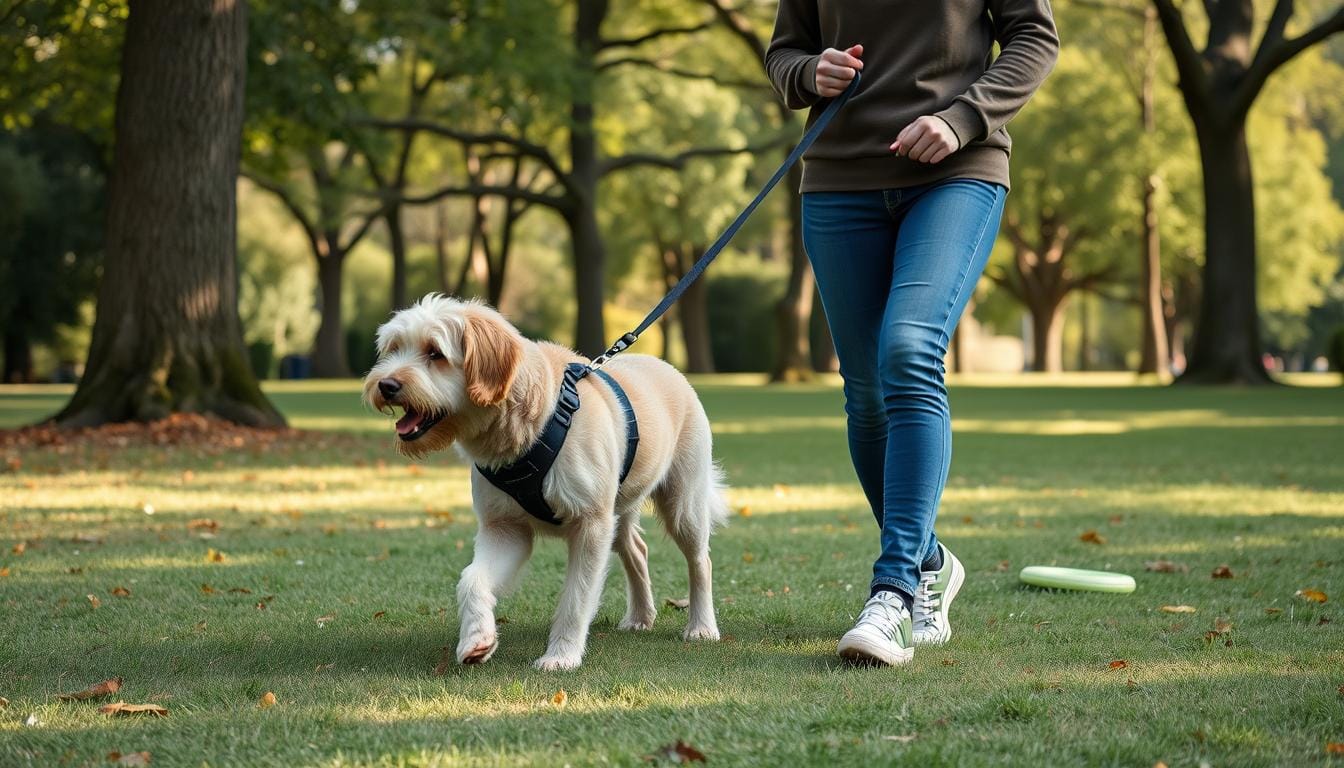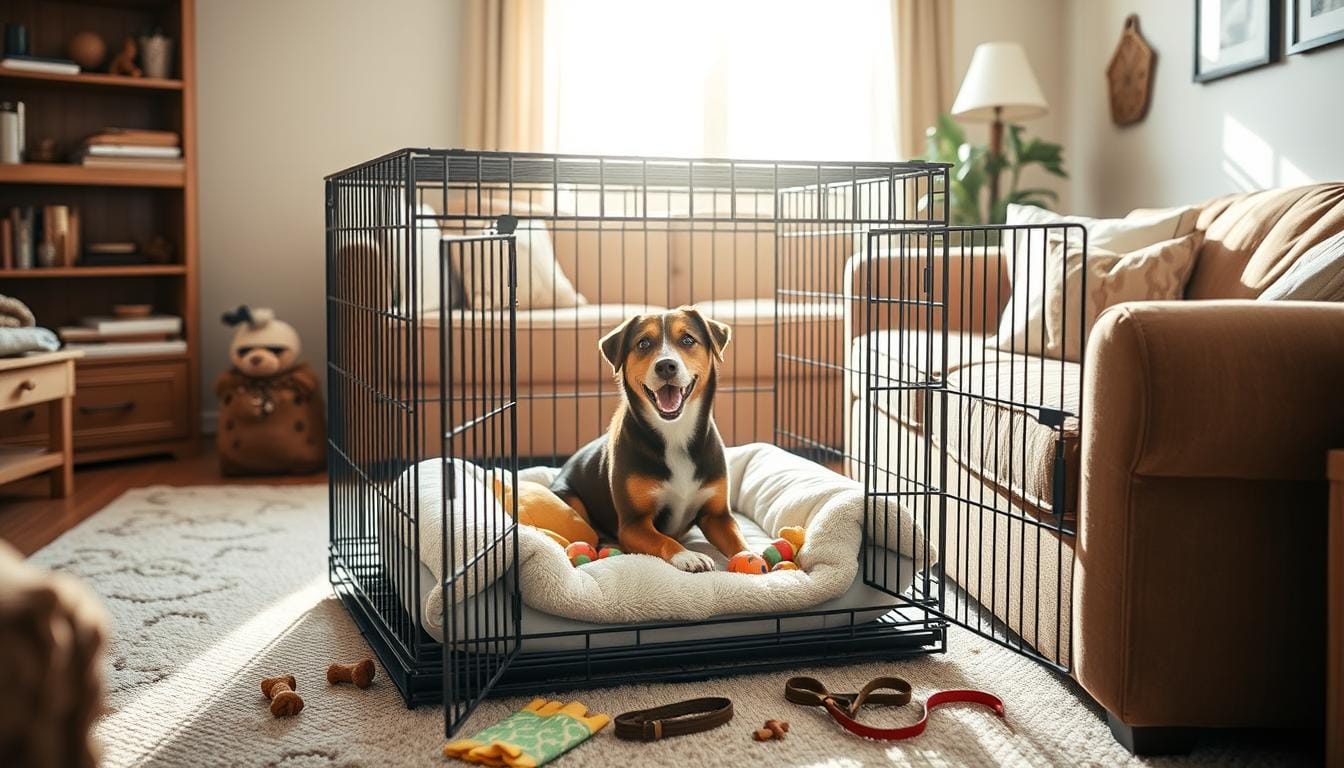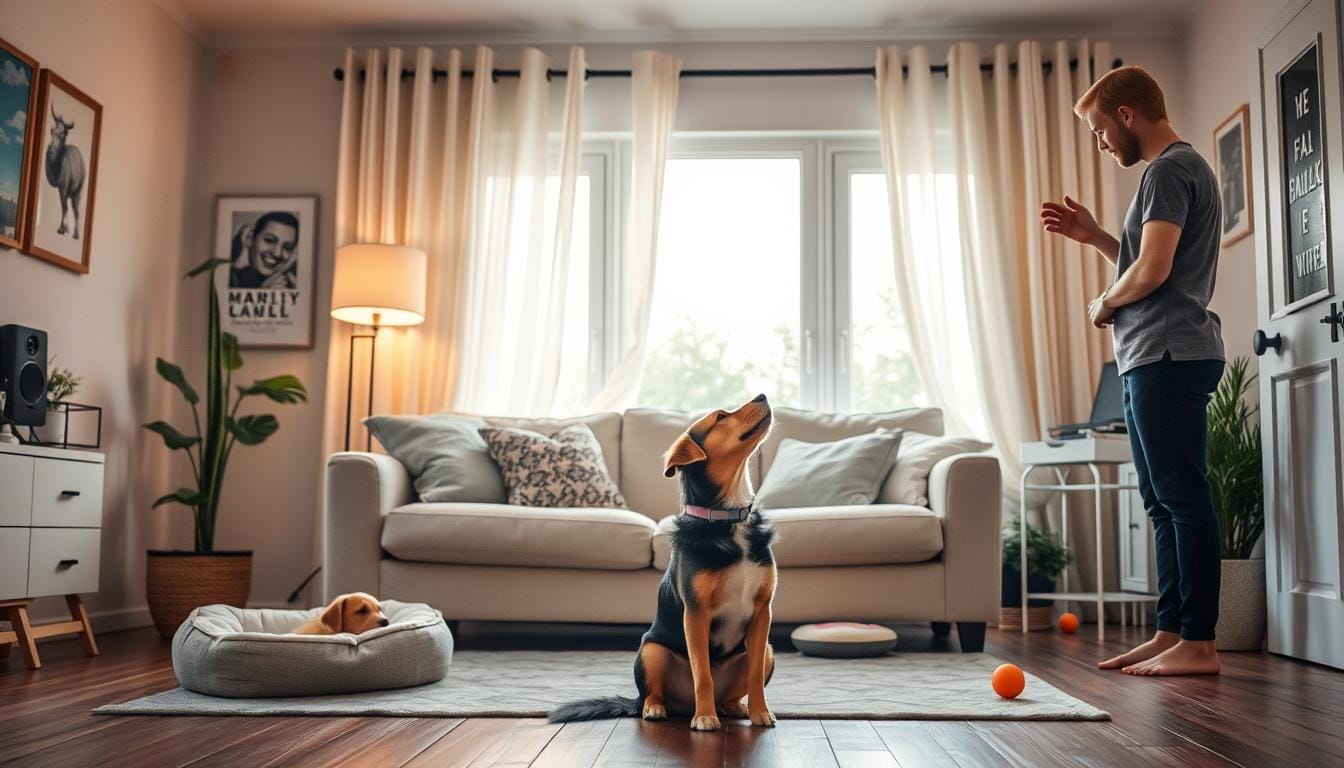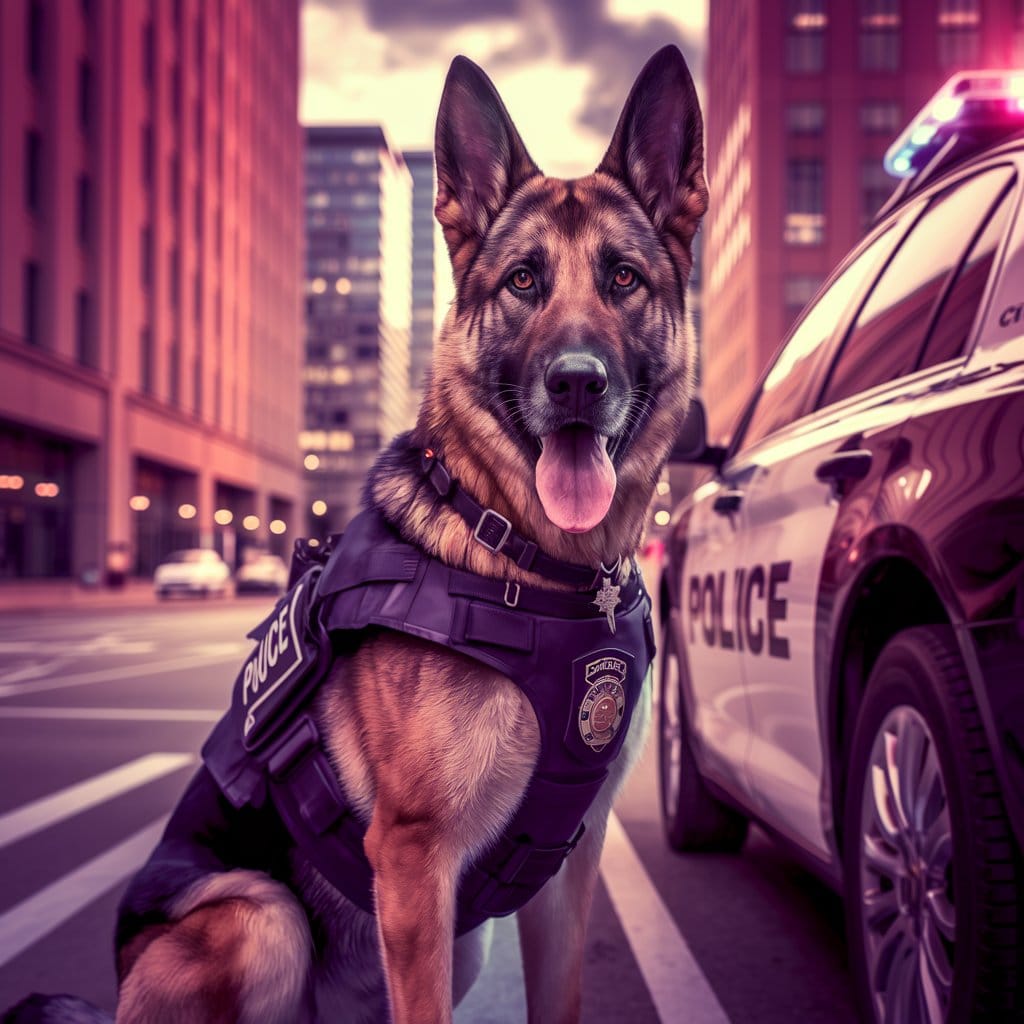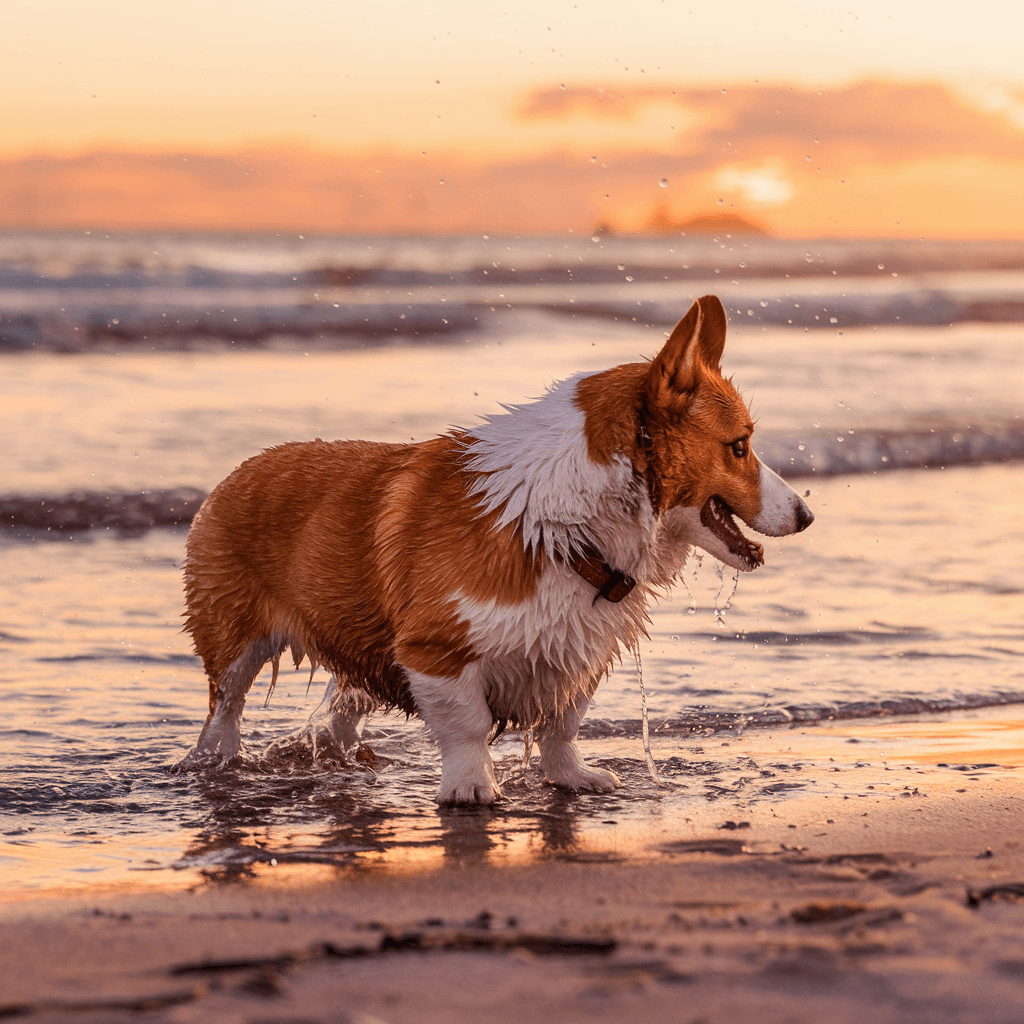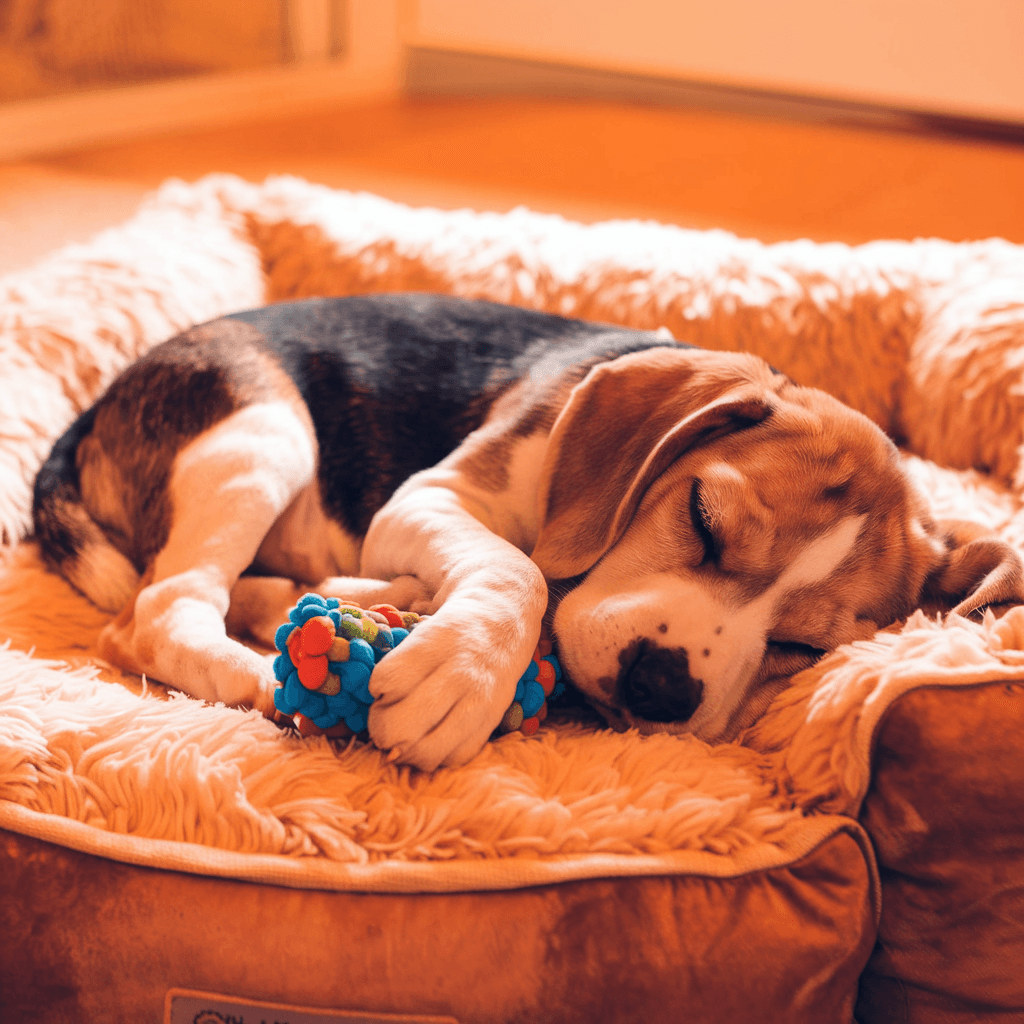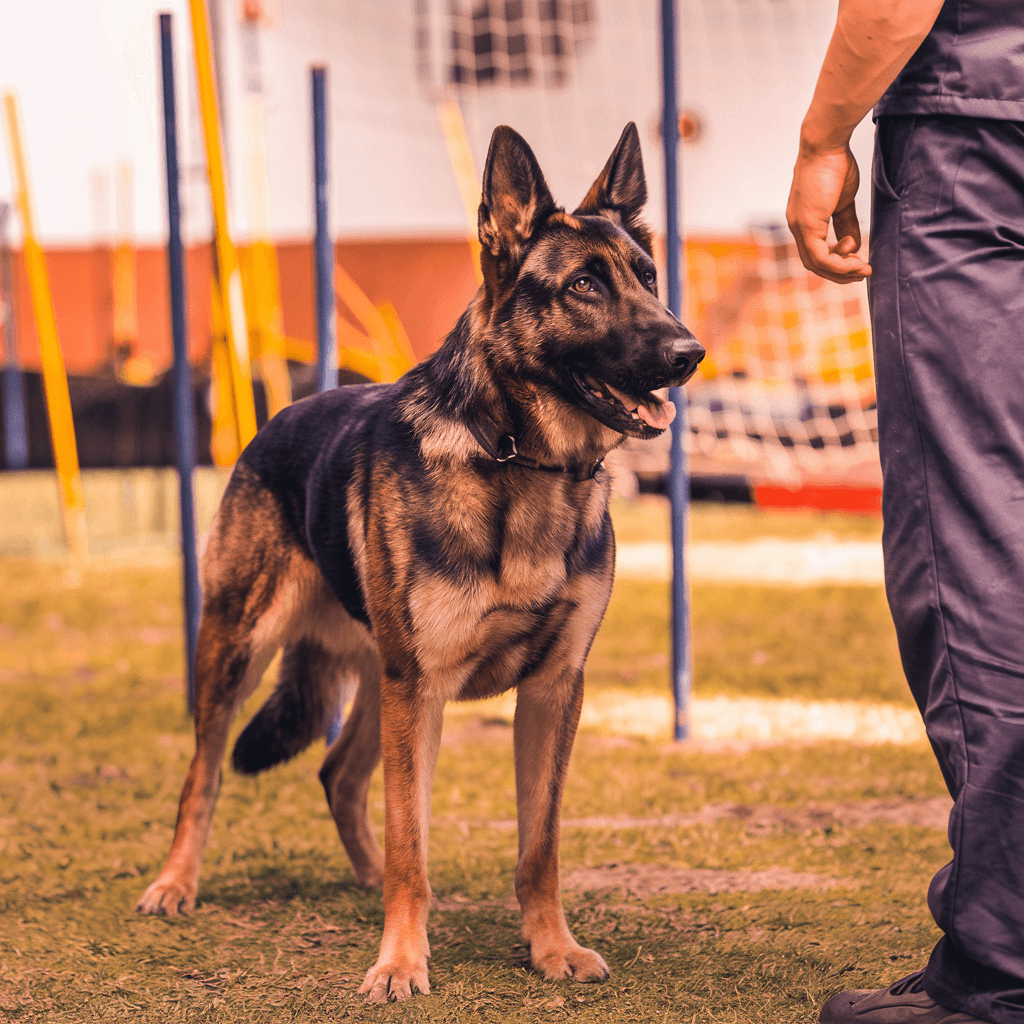Dogs can sense human emotions instinctively. They can pick up on our body language and tone of voice. This makes the bond between humans and dogs very special.
Choosing the right dog harness is key for their safety and comfort during walks. We’ll look at how to pick and use the perfect harness for your pup. This ensures enjoyable and secure walks for your dog.
Dog harnesses have many benefits over traditional collars. They give better control, reduce neck strain, and stop pulling. With different types like back-clip, front-clip, and step-in, finding the right fit is important.
Getting the right size is crucial for a harness. The most important thing is the girth measurement. A good fit should let you fit two fingers between the harness and your dog’s body. This ensures a snug but not too tight fit.
Key Takeaways
- Dog harnesses provide better control and safety than traditional collars
- Proper sizing is crucial for comfort and preventing escape
- Various harness types are available for different dog sizes and purposes
- Girth measurement is the most important factor in choosing the right size
- A well-fitted harness should allow two fingers to fit between it and the dog’s body
- Regular checks and adjustments are necessary to maintain optimal fit
Understanding the Importance of Dog Harnesses
Dog harnesses are now a favorite among pet owners and dog training experts. They make walks safer and more fun for both dogs and their owners. Harnesses offer many benefits.
Safety and control during walks
A good dog harness gives better control, especially for strong or active dogs. It spreads the pulling force across the chest and back. This reduces injury risk.
This is key for breeds with health issues:
- Miniature poodles: can hurt their tracheas from neck collars
- Pugs and whippets: can slip out of collars easily
Reducing strain on your dog’s neck
Using a harness instead of a collar helps avoid long-term health problems. Pulling on a dog’s neck can damage the thyroid or spine. Harnesses spread the pressure evenly, protecting vital organs.
Benefits for dogs with medical conditions
Dogs with breathing or throat issues find harnesses more comfy. They let dogs breathe freely and don’t put pressure on sensitive spots. Harnesses also support dogs recovering from surgeries or injuries.
| Activity | Recommended Gear |
|---|---|
| Yard patrolling | Collar |
| Dog park visits | Collar |
| Running/Hiking | Collar and Harness |
| Leash walking | Harness |
While harnesses have many benefits, picking the right one is key. A bad fit can be harmful. Choose based on your dog’s size, breed, and needs for comfort and safety.
Types of Dog Harnesses
Dog harnesses come in many styles, each for different needs. We’ll look at the most common types to find the best one for your dog.

Back-clip harnesses are very common. They have D-rings on the back for the leash. These are good for smaller dogs or those who don’t pull much.
Front-clip harnesses, also called ‘anti-pull harnesses,’ have D-rings on the chest. They help stop pulling and are good for training. Puppies like them because they help keep their eyes on their owner during training.
Dual-clip harnesses have clips on both the back and chest. They’re great for changing between walks and training easily.
Step-in harnesses are easy to use. Your dog just steps into the harness, then you buckle it on. They’re perfect for dogs who don’t like things pulled over their heads.
| Harness Type | Best For | Key Feature |
|---|---|---|
| Back-clip | Small dogs, casual walks | D-ring on back |
| Front-clip | Pullers, training | Chest attachment |
| Dual-clip | Versatile use | Back and chest clips |
| Step-in | Easy application | Dog steps into harness |
There are special harnesses for certain activities. The Sled Pro Harness is for dog sledding, with durability and reflective parts. The Running Harness is for active dogs, making jogging comfortable. Always make sure the harness fits right to avoid discomfort and injuries.
Factors to Consider When Selecting a Dog Harness
Choosing the right dog harness is key for your pet’s comfort and safety. We’ll look at important factors to consider when picking one.
Size and Breed of Your Dog
Dog harnesses come in different sizes for various breeds. Brands usually have small, medium, and large sizes. For a good fit, look for harnesses with adjustable straps for the neck and chest. Some even offer custom-made harnesses for dogs with special needs.
Material and Comfort
The harness material greatly affects your dog’s comfort during walks and dog training. Cotton weave is softer and better for sensitive skin. Some harnesses use durable marine-grade steel. Make sure the harness distributes pressure evenly and allows for shoulder movement.
Adjustability and Ease of Use
An easy-to-use harness makes walks more fun. Here are some styles to consider:
- Over-the-head: Simple to put on and take off
- Step-in: Popular but can be challenging for some dogs
- H and Y-style: Easy to dress your dog
For nervous dogs or those with larger heads, choose harnesses with a buckle on the neck strap.
Reflectivity for Night Walks
Safety is crucial during evening walks. Choose harnesses with reflective strips to make your dog more visible in the dark.
| Harness Type | Best For | Key Feature |
|---|---|---|
| Back-clip | Well-behaved dogs | Leash attachment on back |
| Front-clip | Dogs that pull | Reduces pulling force |
| Dual-clip | Strong or large dogs | Better control |
Remember, the perfect dog harness should fit snugly but still allow two fingers between the harness and your dog’s body. With these tips, you’ll find the ideal harness for your furry friend.
How to Measure Your Dog for a Harness
Finding the right fit for your dog harness is key for their comfort and safety. We’ll show you how to take the right measurements. This way, you can pick the perfect harness for your furry friend.

The chest girth is the most important measurement. Wrap a tape measure around the widest part of your dog’s chest. This is just behind the front legs. This measurement helps find the right size for most dog harnesses.
Then, measure the neck circumference. Put the tape measure where a collar would sit. Make sure there’s room for two fingers. Some harnesses need this measurement for a good fit.
Lastly, measure your dog’s body length. Start from the base of the neck to the base of the tail. This helps decide if a harness style fits your dog’s body.
| Measurement | How to Measure | Importance |
|---|---|---|
| Chest Girth | Around widest part of chest | Critical for harness size |
| Neck Circumference | Where collar sits | Essential for some styles |
| Body Length | Base of neck to tail | Determines harness style suitability |
Remember, exact measurements are more important than your dog’s weight when picking a harness. If your dog is between sizes, choose the closest one to their measurements. With these tips, you’ll find a harness that keeps your dog comfortable and in control during walks.
Proper Fitting Techniques for Dog Harnesses
Fitting a dog harness correctly is key for your pet’s comfort and safety. We’ll show you how to make sure your furry friend loves walks outside.
Step-by-Step Harness Fitting Guide
Begin by setting the harness to its loosest setting. For step-in styles, have your dog put their front legs in the holes. Then, lift the harness up and secure all straps.
With over-the-head designs, put the harness over your dog’s head first. Then, fasten the buckles.
Achieving the Perfect Fit
A good dog harness should fit snugly but not too tight. You should be able to fit two fingers between the harness and your dog’s body. This keeps them comfortable and prevents escape.
The leash clip ring should be high on the chest. This helps with control during training.
Common Fitting Mistakes
Avoid these common errors when fitting your dog’s harness:
- Too loose: Allows for potential escape
- Too tight: Causes discomfort and possible chafing
- Improper positioning: Can lead to fur loss or restricted movement
Remember, different harness types need specific fitting methods. If unsure, ask a pro or check the manufacturer’s guide. With the right fit, your dog harness will make walks safe and fun for both you and your dog.
Training Your Dog to Walk with a Harness
Dog training with a harness needs patience and consistency. It usually takes 4 weeks, but it depends on your dog’s age and breed. We use positive reinforcement and gradual steps.
Begin by letting your dog get used to the harness at home. Let them sniff and explore it. Place treats near the harness to help them associate it with good things. This step is key for successful dog walking.
When your dog is okay with the harness, start fitting it:
- Give treats as you put the harness on
- Reward them for staying calm when clipping
- Make sure it’s not too tight – you should fit one finger between the straps and their body
If your dog is sensitive to sounds, get them used to the clip noise first. If they seem upset, go back to the last step.
For outdoor training, start with short walks. Use treats to praise them and gently steer them back when they pull. Being consistent is important – follow your training plan for weeks to see results.
“Positive reinforcement is the cornerstone of effective harness training. Patience and consistency lead to success.”
Every dog is different. Some might pick it up fast, while others need more time. If you’re having trouble, a professional dog trainer can offer personalized advice.
Caring for Your Dog Harness
Keeping your dog harness in good shape is key for your pet’s comfort and safety. Here are some important tips to help you do just that.
Cleaning and maintenance tips
It’s important to clean your dog harness regularly. Brands like 2 Hounds Design and Beast & Buckle make products that can be machine washed. However, hand washing is often the best option for gentle care.
Use a pet-safe, natural laundry detergent. Avoid harsh chemicals that can harm your dog’s harness.
- Wash the harness in a laundry bag on a gentle cycle
- Use low-temperature settings to prevent color fading
- Air-dry the harness to maintain its shape and durability
- For leather harnesses, apply a non-toxic, pH-balanced leather treatment
When to replace your dog harness
Check your dog harness often for signs of wear. Look for fraying, loose stitches, or broken buckles. If you see these problems or if the harness no longer fits, it’s time for a new one.
| Maintenance Task | Frequency |
|---|---|
| Wash harness | Every 2-4 weeks |
| Inspect for damage | Weekly |
| Check fit | Monthly |
| Replace harness | As needed (typically every 1-2 years) |
By following these care tips, you can make your dog harness last longer. This ensures your pet stays comfortable on all their adventures.
Harness Safety Features to Look For
When picking a dog harness, safety is key. We’ve listed important features to keep your dog safe and comfy on walks.
A sturdy harness is essential. Look for strong stitching and materials that last. Also, make sure the buckles are secure to avoid accidents.
Being seen is important, especially at night. Many harnesses have reflective parts. These help keep your dog visible when it’s dark.
Some harnesses have handles for extra control. They’re great for older dogs or big breeds. If you drive with your pet, find a harness that fits car seat belts.
- Adjustable straps for a custom fit
- Multiple adjustment points for various dog sizes
- Front-clip options to reduce pulling
- Breathable materials for comfort
The right harness can change your walks for the better. Focus on these safety features for a safer, happier walk with your dog.
| Harness Type | Key Safety Features | Best For |
|---|---|---|
| No-Pull Harness | Front-clip, padded chest piece | Dogs who tend to pull |
| Step-In Harness | Easy to put on, secure buckles | Small to medium dogs |
| Vest Harness | Distributes pressure evenly, reflective trim | All-day wear, visibility |
| Car Safety Harness | Crash-tested, seat belt compatible | Frequent travelers |
Comparing Harnesses to Collars: Pros and Cons
Choosing between a dog harness and a collar can be tough. Let’s look at the good and bad of each to help you decide.
Dog harnesses have many benefits. They’re hard for dogs to slip out of, perfect for active pets. Harnesses also lower health risks, like back pain and injuries from pulling. Front-clip harnesses help control pulling, making walks easier.
Collars, however, are simpler to put on and better for daily walks. They come in many styles, like flat and rolled collars. Plus, they’re great for holding ID tags and can stay on all the time.
| Feature | Harness | Collar |
|---|---|---|
| Escape Prevention | High | Low |
| Health Risks | Lower | Higher |
| Pulling Control | Better | Limited |
| Ease of Use | Moderate | High |
| ID Tag Compatibility | Limited | High |
Remember, there’s no single best choice. The right choice depends on your dog’s breed, health, and needs. For example, dogs with breathing issues or long necks might do better with a harness. Always talk to your vet to find the best fit for your dog.
Addressing Common Dog Harness Issues
Dog harnesses are great for training and safety, but they can have problems. Let’s look at common issues and how to solve them. This way, your dog will stay comfy and safe.
Dealing with Chafing and Discomfort
Chafing is a big issue with harnesses that don’t fit right. A good harness shouldn’t rub or hurt your dog. For dogs with barrel chests, finding the right size can be hard.
Make sure you can fit two fingers between the harness and your dog. This is key for a comfortable fit.
Preventing Escape Artists
Some dogs are good at slipping out of their harnesses. This is more likely with harnesses that don’t fit well. It’s important to check the fit often, especially for puppies.
If your dog likes to escape, look for harnesses with more attachment points. Always make sure they wear ID tags.
Adjusting for Growing Puppies
Puppies grow fast, so their harnesses need to be adjusted often. This prevents discomfort and escape risks. Choose harnesses that can grow with your puppy.
| Issue | Solution |
|---|---|
| Chafing | Ensure proper fit, use padded harnesses |
| Escaping | Multiple attachment points, secure fit |
| Growing puppies | Regular fit checks, adjustable harnesses |
| Gait alteration | Choose harness style carefully |
Front-clip harnesses are popular for training, but Dr. Christine Zink’s research shows they might change a dog’s walk. Each dog is different. Talk to a vet to find the best harness for your dog.
Conclusion
Choosing the right dog harness is key for your pet’s comfort and safety. We’ve looked at how to pick, fit, and use harnesses. A good harness should not limit movement or cause skin problems.
It’s important to think about your dog’s size, breed, and how active they are. This helps find the best harness for them.
Dog training experts often prefer harnesses over collars. Harnesses spread out the pressure, which is safer for the neck. This can also help with leash manners and make walks better.
Getting the harness to fit right and training consistently are crucial. Keeping the harness in good shape and replacing it when needed is important for safety. By picking the right harness and training, we can keep our dogs happy and safe during walks.







